I am using Verilog in Lattice Diamond IDE with a lattice MachXO2 7000HE breakout board.
I built a basic counter with a limit input which generates a variable period clock output. It works fine on its own, however, when I add two instances of this module and connect them in series (to scale the frequency twice), I get an odd result on the FPGA. The simulation, however seems to show what I had expected from the code.
Here is the top module:
module clock_generator (fpga_clock, cnt1_clock, cnt2_clock, cnt2_counter);
output wire fpga_clock;
output wire cnt1_clock;
output wire cnt2_clock;
output wire [7:0] cnt2_counter;
reg [7:0] default_period_1 = 8'b00000011;
reg [7:0] default_period_2 = 8'b00000011;
defparam OSCH_inst.NOM_FREQ = "2.08";
OSCH OSCH_inst(.STDBY(1'b0), .OSC(fpga_clock));
counter Counter_1_inst(.clk_in(fpga_clock), .limit_in(default_period_1), .clk_out(cnt1_clock), .cnt_out());
counter Counter_2_inst(.clk_in(cnt1_clock), .limit_in(default_period_1), .clk_out(cnt2_clock), .cnt_out(cnt2_counter));
endmodule
module counter (clk_in, limit_in, clk_out, cnt_out, rst);
input wire clk_in;
input wire [7:0] limit_in;
output reg clk_out = 1'b1;
output reg [7:0] cnt_out = 8'b00000000;
input wire rst;
always @(posedge clk_in or posedge rst) begin
if (rst) begin
clk_out <=0;
cnt_out <=0;
end else if (cnt_out == limit_in) begin
clk_out <= !clk_out;
cnt_out <= 0;
end else begin
cnt_out <= cnt_out + 1'b1;
end
end
endmodule
And here is the testbench for my simulation:
`timescale 1 ns / 1 ns
module testbench;
wire fpga_clock;
wire cnt1_clock;
wire cnt2_clock;
wire [7:0] cnt2_counter;
clock_generator dut(.fpga_clock(fpga_clock), .cnt1_clock(cnt1_clock), .cnt2_clock(cnt2_clock), .cnt2_counter(cnt2_counter));
initial begin
#1400000000
$finish;
end
endmodule
Here is the simulation output:
And the scope output:
ch1 - fpga_clock
ch2 - cnt1_clock
ch3 - cnt2_clock
ch4 - cnt2_counter[1]
Channel 3 (cnt2_clock) should have twice the period of cnt2_counter[1], as it is in the simulation output. Instead as you can see it's a burst of higher frequency edges where the single edge should be. I've been on this for a while now. What am I missing?
Thank you!
########## Edit with additional picturesScope output with cnt2_counter[0]
ch1 - fpga_clock
ch2 - cnt1_clock
ch3 - cnt2_counter[0]
ch4 - cnt2_counter[1]




![cnt2_counter0[4]](../../images/3850308786.webp) And the probe setup:
And the probe setup:

